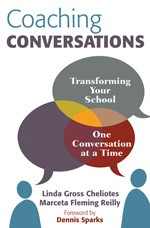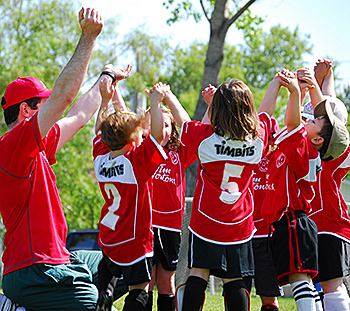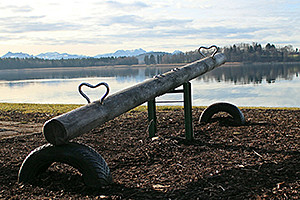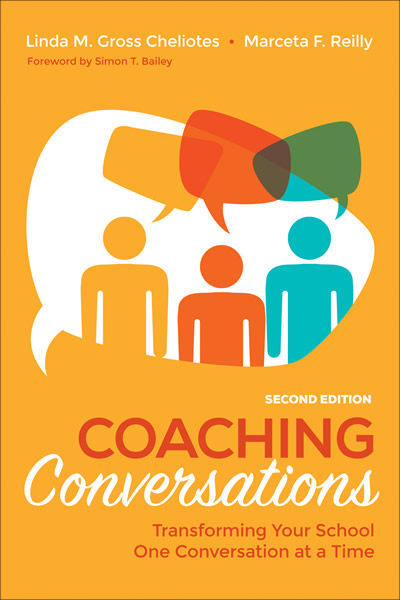Recently, Rebecca Weber, a freelance reporter in South Africa, interviewed me for an article in the newsletter for St. Thomas University online. She asked me what role coaching plays in our schools. Here is my response: Wouldn’t it be great to have a coach for every new teacher and administrator?
Coaching Educators to Enhance Leadership
Posted June 10, 2015 by Rebecca L. Weber
 Marceta Reilly
Marceta Reilly
Marceta Reilly, a leadership coach and co-author of “Coaching Conversations: Transforming Your School One Conversation at a Time” wishes every educator could have a coach for their entire first year in a new role. She believes it could help curb the high attrition rate of
new teachers.
“I think we would lose fewer of them if they had a true coach who isn’t just about fixing problems, but really about self-discovery,” says Reilly, a former principal and superintendent. The delicate and pivotal coaching experience can set teachers up for reflective excellence over the course of a career.
“If you approach coaching as simply helping people do stuff, that’s fine,” says Reilly. “It’s not transformative for their careers. What’s transformative is when as a coach you help people understand their strengths, find their voice, and step into their own personal authenticity.”
Mentors are frequently veterans who give advice based on their own expertise, whereas the coach is more of a guiding role.
“You can be very coach-like in your mentoring,” says Reilly. “Helping them understand best practices in instruction and … using the strengths they bring to the table. It’s very individualized.”
Reilly coaches first-year principals, who often have “huge anxiety” about knowing all the answers to every question their staff might
ask. “They think they have to be chief problem solver,” she says.
When principals let go of the idea of being the expert and having all the answers, it allows them to instead engage, she says. After a teacher explains a challenge, the principal can then ask “What are your ideas?” and can then affirm that the approach makes sense.
“Often teachers come with problems, but actually want validation. Often, you just affirm what they say: ‘Yep, that’s a good approach,’”
she says.
Coaching conversations

Published by Corwin
A coaching conversation is “the major tool for developing leadership skills” and should be about helping somebody else to do their best thinking, says Reilly. Building trust and rapport are paramount. Here are her suggestions for integrating the coach approach:
- Listen deeply. Not just to what they say, but listen for any underlying emotions or assumptions.
- Show up as a thinking partner. This is a mindset: The coach is not an expert trying to fix somebody, but approaches the conversation believing that the other person has the capacity to grow, and the capabilities to solve the problem at hand.
- Ask really good questions to help them reflect and develop insights.
- Give good feedback that moves them to action. “Telling them what they are or are not doing well promotes pushback.”
Culture of self-improvement
When it comes to their students, educators typically see the value in continuous learning and improvement.
But many schools still work in the paradigm that once a teacher has received their training and credentials, they are experts and largely autonomous in their classroom.
A teacher may already have a reflective teaching practice, bolstered by active reading and study groups, as well as occasional workshops for professional development. But they are limited by what they’re conscious of — and that’s where the coach can come in. A good coach
will identify and discuss elements that the teacher is unconscious of.
For those who are in a traditional leadership role, embracing coaching may seem like a threat to authority.
“The biggest challenge is to let go — that you’re not going to be considered credible if you don’t have the answers,” Reilly says. “Like Brené Brown, you have to make yourself a little vulnerable.”
The coach approach
 Jim Knight
Jim Knight
Instructional coaches work in partnership with teachers, helping them set and reach their own goals. Good coaching is adaptive to meet the changing needs of the complexities of teaching in the modern classroom.
“We modify things until we hit the goal,” says Jim Knight, director of the Kansas Coaching Project and author of “Instructional Coaching:
A Partnership Approach to Improving Instruction.”
When working with teachers, Knight’s team emphasizes two important principles:
- Try to respect the autonomy of the teacher. “When you insist, they resist,” says Knight.
- Believe in the coaching process. “This has an unmistakably positive impact on kids’ lives,” he says.
Getting on the same page
Knight favors peer-to-peer coaching relationships. “They’re more forthcoming with peers than with administrators,” he says. The ideal scenario is one of transparency and safety. If that’s not the culture, then concerns about privacy and what will be shared arise.
“When you’re a coach, you’re privy to people with their guard down.”
That doesn’t mean that principals can’t model coaching as well — in fact, when they’re on the same page, they can lead change in
incredibly effective ways. “A principal needs to walk the talk,” says Knight.
For example, if the principal wants teachers to videotape their classes, then the principal needs to model this and also record and
review his or her own video, and discuss what s/he learned.
Make the process transparent
Transparency can make the process less intimidating and help educator relationships move forward.
“Teach them what you want: ‘If you have a problem, first I’m going to ask you what you’d do. If you have something I want you to think about, I’ll be honest and tell you.’ It’s scary to do that. You feel like you’re taking a big risk,” Reilly says.
Modeling for staff what it means to try something new underscores authentic commitment. “It’s counterintuitive, but they begin to think
you are the smartest person in the world — even though you are just pointing them to resources.”
Rebecca L. Weber is a journalist who covers education, the arts, the environment, and more for the New York Times, CNN, USA Today, and other publications. Visit her online at www.rebeccalweber.com or on Twitter @rebeccalweber.
 I believe that leadership is an activity, not a position. Everyone can exert leadership skills no matter where they are on an organizational chart. You don’t have to be the “team leader” in order to suggest an idea, bring a perspective, or do something that helps the group move forward to make positive progress.
I believe that leadership is an activity, not a position. Everyone can exert leadership skills no matter where they are on an organizational chart. You don’t have to be the “team leader” in order to suggest an idea, bring a perspective, or do something that helps the group move forward to make positive progress.







 Leadership, at its core, is about resolving problems and challenges. Ron Heifetz, co-founder of the Center for Public Leadership at the Kennedy School of Government, describes two basic kinds of challenges: technical challenges and adaptive challenges. Many challenges have both technical and adaptive aspects.
Leadership, at its core, is about resolving problems and challenges. Ron Heifetz, co-founder of the Center for Public Leadership at the Kennedy School of Government, describes two basic kinds of challenges: technical challenges and adaptive challenges. Many challenges have both technical and adaptive aspects. As the beginning of the school year nears our thoughts move to ways to build and support strong, effective school teams. They are vital to having success with students. And a key to team development is having high emotional intelligence—learning to recognize and manage your own emotions and those of others.
As the beginning of the school year nears our thoughts move to ways to build and support strong, effective school teams. They are vital to having success with students. And a key to team development is having high emotional intelligence—learning to recognize and manage your own emotions and those of others. All educators want to believe that teachers love kids and are true advocates of them. We remember with warmth and appreciation those teachers who spotted our strengths, loved our quirks, and inspired and challenged us to dream big and do our best. In fact, it is often the memory of those teachers who inspired us to become educators ourselves.
All educators want to believe that teachers love kids and are true advocates of them. We remember with warmth and appreciation those teachers who spotted our strengths, loved our quirks, and inspired and challenged us to dream big and do our best. In fact, it is often the memory of those teachers who inspired us to become educators ourselves. Marceta Reilly
Marceta Reilly
 Jim Knight
Jim Knight Good leaders must lead by example. Through their actions, which are aligned with what they say, they become a person others want to follow. When leaders say one thing but do another, they erode trust, a critical element of productive leadership. Here are 10 of the dozens of ways to lead by example.
Good leaders must lead by example. Through their actions, which are aligned with what they say, they become a person others want to follow. When leaders say one thing but do another, they erode trust, a critical element of productive leadership. Here are 10 of the dozens of ways to lead by example. If trying to maintain balance in your life makes you feel like a tightrope walker, you’re not alone. Most of us have so many demands on our time and energy, life can feel like a three-ring circus.
If trying to maintain balance in your life makes you feel like a tightrope walker, you’re not alone. Most of us have so many demands on our time and energy, life can feel like a three-ring circus.  The practice of gratitude as a tool for happiness has been in the mainstream for years. Long-term studies support gratitude’s effectiveness, suggesting that a positive, appreciative attitude contributes to greater success in work, greater health, peak performance in sports and business, a higher sense of well-being, and a faster rate of recovery from surgery.
The practice of gratitude as a tool for happiness has been in the mainstream for years. Long-term studies support gratitude’s effectiveness, suggesting that a positive, appreciative attitude contributes to greater success in work, greater health, peak performance in sports and business, a higher sense of well-being, and a faster rate of recovery from surgery.
 “Beyond our ideas of right-doing and wrong-doing, there is a field. I’ll meet you there.”
“Beyond our ideas of right-doing and wrong-doing, there is a field. I’ll meet you there.”
